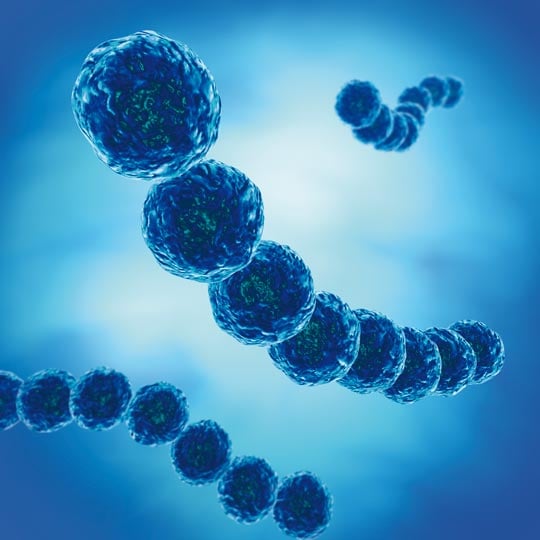HARTMANN SCIENCE CENTER

The genus Streptococcus belongs to the family Streptococcaceae. They are spherical, chain-forming, Gram-positive bacteria. Their behavior concerning hemolysis and the Lancefield-classification divide the different species into serogroups. Latter is due to differences in cell wall antigens. Strains which were pathogenic for humans are Streptococcus pyogenes and Streptococcus pneumoniae. But there are also uncommon species like Streptococcus agalactiae, Streptococcus mutans, Streptococcus gallolyticus and Streptococcus bovis.
Streptococcus can cause pharyngitis, caries, ear-nose-throat infections, urinary tract infections, endocarditis and septicemia.
Transmission mainly occurs via droplets or particles in the air or via direct or indirect contact with contaminated persons or objects.
» Necessary spectrum of antimicrobial activity
Bactericidal
Click here to find products with bactericidal activity.
